From the Trenches
Drones Enter the Archaeologist's Toolkit
By NIKHIL SWAMINATHAN
Tuesday, October 15, 2013

Peruvian archaeologists are using small, remote-controlled aircraft to transform their understanding of sites. Luis Jaime Castillo of Lima’s Catholic University works with Harvard researchers at Cerro Chepén, a mountaintop site inhabited more than 1,200 years ago by the Moche people. The complex site has multiple components arrayed across difficult terrain, with a fortress at the summit and residences on the slopes—a serious challenge to any archaeological mapping effort.
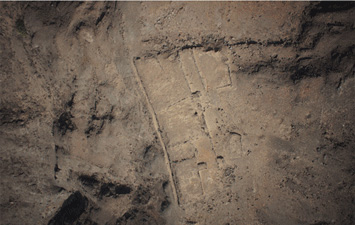 Castillo’s team used a small multicopter to take 700,000 low-altitude aerial photos of the site in just 10 minutes, nearly 50 times more than his team had captured with traditional ground-based photography in four dig seasons. Castillo then stitched the images together to create detailed 3-D models. “You can see every wrinkle of the site,” he says. “You can model every single stone.”
Castillo’s team used a small multicopter to take 700,000 low-altitude aerial photos of the site in just 10 minutes, nearly 50 times more than his team had captured with traditional ground-based photography in four dig seasons. Castillo then stitched the images together to create detailed 3-D models. “You can see every wrinkle of the site,” he says. “You can model every single stone.”
Who Was First to the Faroes?
By ERIC A. POWELL
Tuesday, October 15, 2013
Halfway between Norway and Iceland, the Faroe Islands were long thought to be so remote that even the wide-ranging Vikings didn’t settle there until the ninth century A.D., once improved navigational technology allowed them to make long-distance sea voyages. New evidence unearthed by a team led by Durham University archaeologist Michael Church and National Museum of the Faroe Islands curator Símun V. Arge shows that another group actually settled the archipelago some 500 years before the Vikings arrived.
 Excavating beneath the remains of a Viking longhouse, the team found two layers of burnt peat ash containing barley grains—unambiguous evidence of human presence. Radiocarbon dating of the ash layers shows that one was burned sometime between the fourth and sixth centuries A.D., and the other between the sixth and eighth centuries. The ash was probably taken from domestic hearths and then spread onto the sandy surface to control erosion, a common practice in the North Atlantic at the time.
Excavating beneath the remains of a Viking longhouse, the team found two layers of burnt peat ash containing barley grains—unambiguous evidence of human presence. Radiocarbon dating of the ash layers shows that one was burned sometime between the fourth and sixth centuries A.D., and the other between the sixth and eighth centuries. The ash was probably taken from domestic hearths and then spread onto the sandy surface to control erosion, a common practice in the North Atlantic at the time.
But just who the early arrivals were remains a mystery. “All we know is that they cut peat and grew barley,” says Church. “They lived in sporadic, small-scale settlements, and the Viking invasion in the ninth century would have destroyed most of the evidence for them.” The settlers could have come from Scandinavia, Scotland, the Shetland Islands, or even Ireland, all places where early medieval people grew barley and used peat for fuel. Church notes that sixth-century Irish monks left accounts that mention islands that could be the Faroes, which lie some 600 miles to the north of Ireland. “Monks of that era were known to make long journeys in search of solitude to get nearer to God,” says Church. “The Faroes would certainly have offered them that.”
The Neolithic Palate
By SAMIR S. PATEL
Tuesday, October 15, 2013
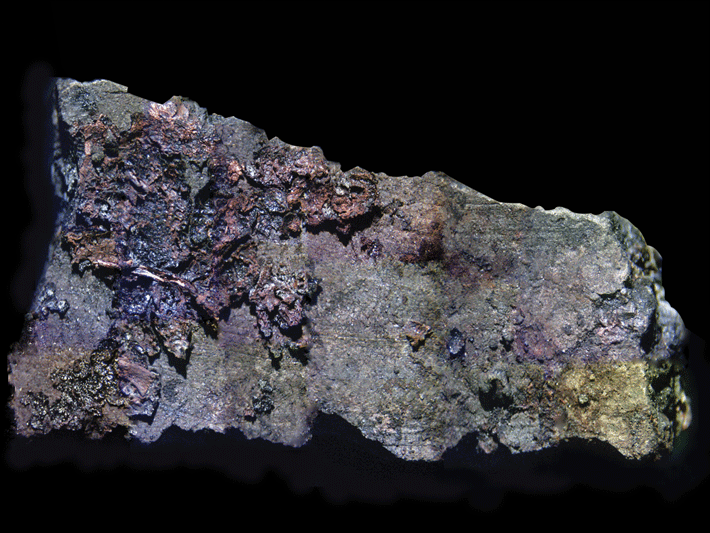 Europe’s historical hunger for tasty food—spices, specifically—helped drive the Age of Exploration. When did flavorful food become so important that it would eventually change the course of human history? It is difficult to say because plant remains rarely last, and it can be a fool’s errand to speculate how they were used thousands of years ago. Now, however, in 6,000-year-old pottery from Denmark and Germany, a team of researchers has found phytoliths, small bits of silica that form in the tissues of some plants, from garlic mustard seeds, which carry strong, peppery flavor but little nutritional value.
Europe’s historical hunger for tasty food—spices, specifically—helped drive the Age of Exploration. When did flavorful food become so important that it would eventually change the course of human history? It is difficult to say because plant remains rarely last, and it can be a fool’s errand to speculate how they were used thousands of years ago. Now, however, in 6,000-year-old pottery from Denmark and Germany, a team of researchers has found phytoliths, small bits of silica that form in the tissues of some plants, from garlic mustard seeds, which carry strong, peppery flavor but little nutritional value.
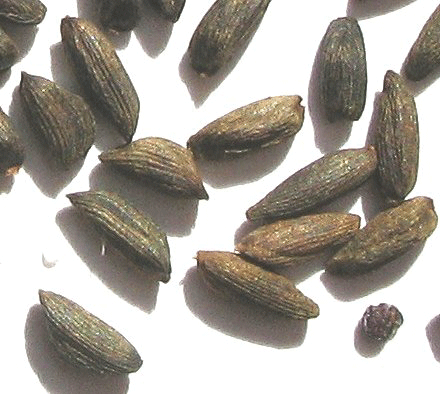 Because they were found alongside residues of meat and fish, the seed remnants represent the earliest known direct evidence of spicing in European cuisine. According to researcher Hayley Saul of the University of York, “It certainly contributes important information about the prehistoric roots of this practice, which eventually culminated in globally significant processes and events.”
Because they were found alongside residues of meat and fish, the seed remnants represent the earliest known direct evidence of spicing in European cuisine. According to researcher Hayley Saul of the University of York, “It certainly contributes important information about the prehistoric roots of this practice, which eventually culminated in globally significant processes and events.”
Secrets of Life in the Soil
By NIKHIL SWAMINATHAN
Tuesday, October 15, 2013
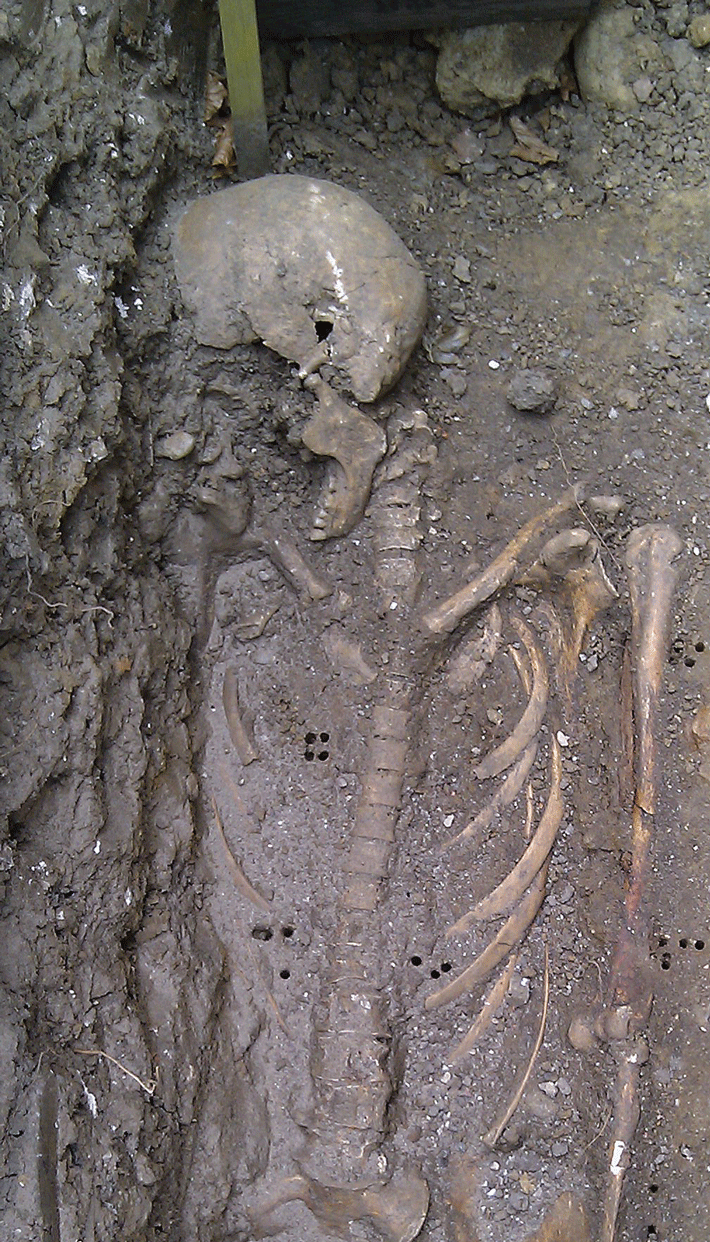 Chemists are analyzing the soil around burials at a medieval cemetery in Ribe, Denmark’s oldest town, 200 miles west of Copenhagen. They’re picking their spots carefully, hoping to illuminate previously unknowable details about the last days of the deceased.
Chemists are analyzing the soil around burials at a medieval cemetery in Ribe, Denmark’s oldest town, 200 miles west of Copenhagen. They’re picking their spots carefully, hoping to illuminate previously unknowable details about the last days of the deceased.
Kaare Lund Rasmussen of the University of Southern Denmark examined the skeletal remains of a 10- to 13-year-old child, and specifically the soil that had once been in contact with the child’s lungs, kidneys, and liver. It has been determined that, as those organs decay, they release chemical compounds that can offer clues to an individuals’ final days or even months. In this case, Rasmussen found high concentrations of mercury. Mercury came to Denmark with Christian monks in the Middle Ages, according to historical sources. The highly toxic element was once thought to have broad curative properties, so its presence suggests that the child was undergoing treatment for a debilitating illness.
Also, the organs that the mercury was associated with suggest something about how and when treatment was administered. Rasmussen found mercury in the soil that had been in contact with the child’s lungs. The element is excreted from the lungs within two days, so the discovery implies that treatment had been given shortly before death. However, the ground near the child’s liver was also enriched, which suggests a much longer course of treatment. Mercury remains in liver tissue for about two months. “I have no doubts the results from our work will affect how soil samples will be taken in future excavations,” says Rasmussen. “It will have a global impact.”
Byzantine Riches
Tuesday, October 15, 2013
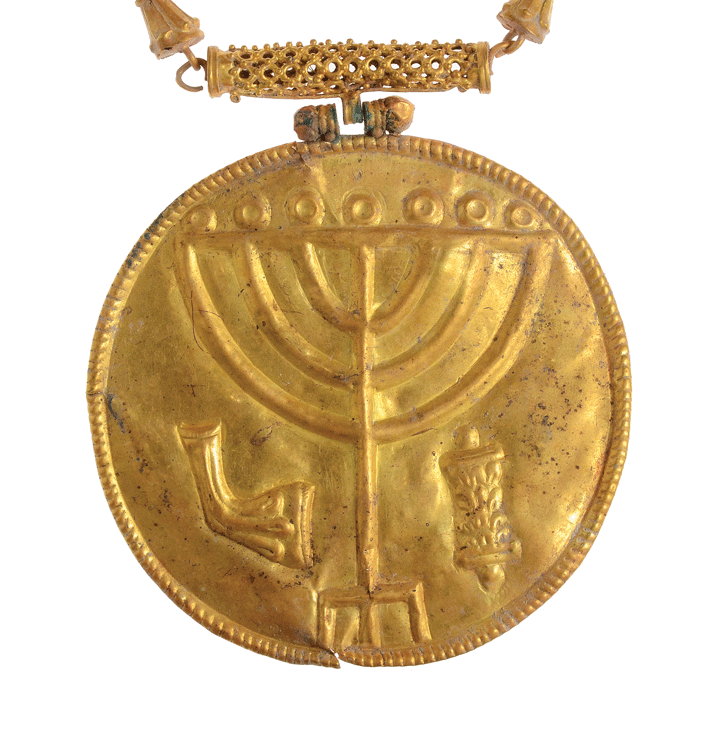
In the ruins of a seventh-century A.D. building at the foot of the Temple Mount, Hebrew University of Jerusalem archaeologist Eilat Mazar has discovered a stunning collection of artifacts. The 36 coins, dating from between the middle of the fourth to the early seventh century A.D., along with gold and silver jewels and a remarkable gold medallion, were once wrapped inside two small fabric bundles, small remnants of which Mazar also found. The medallion depicts a menorah, Torah scroll, and a shofar, a musical instrument usually made of a ram’s horn that is used in Jewish rituals. Found in a hole in the floor, the medallion once hung from a gold chain and was uncovered with a smaller gold medallion, two pendants, a gold coil, and a silver clasp, all of which may have been ornamentations for a Torah scroll.
Advertisement
Advertisement
IN THIS ISSUE
From the Trenches
An Imperial Underworld
Off the Grid
Splendid Surprise
Neanderthal Tool Time
Dutchman Out of His Depth
Catching a Ride from Ireland
The Snake King's New Vassal
Spying the Past from the Sky
Byzantine Riches
The Neolithic Palate
Secrets of Life in the Soil
Who Was First to the Faroes?
Drones Enter the Archaeologist's Toolkit
Advertisement

Recent Issues
-
 May/June 2024
May/June 2024
-
 March/April 2024
March/April 2024
-
 January/February 2024
January/February 2024
-
 November/December 2023
November/December 2023
-
 September/October 2023
September/October 2023
-
 July/August 2023
July/August 2023
-
 May/June 2023
May/June 2023
-
 March/April 2023
March/April 2023
-
 January/February 2023
January/February 2023
-
 November/December 2022
November/December 2022
-
 September/October 2022
September/October 2022
-
 July/August 2022
July/August 2022
-
 May/June 2022
May/June 2022
-
 March/April 2022
March/April 2022
-
 January/February 2022
January/February 2022
-
 November/December 2021
November/December 2021
-
 September/October 2021
September/October 2021
-
 July/August 2021
July/August 2021
-
 May/June 2021
May/June 2021
-
 March/April 2021
March/April 2021
-
 January/February 2021
January/February 2021
-
 November/December 2020
November/December 2020
-
 September/October 2020
September/October 2020
-
 July/August 2020
July/August 2020
-
 May/June 2020
May/June 2020
-
 March/April 2020
March/April 2020
-
 January/February 2020
January/February 2020
-
 November/December 2019
November/December 2019
-
 September/October 2019
September/October 2019
-
 July/August 2019
July/August 2019
-
 May/June 2019
May/June 2019
-
 March/April 2019
March/April 2019
-
 January/February 2019
January/February 2019
-
 November/December 2018
November/December 2018
-
 September/October 2018
September/October 2018
-
 July/August 2018
July/August 2018
-
 May/June 2018
May/June 2018
-
 March/April 2018
March/April 2018
-
 January/February 2018
January/February 2018
-
 November/December 2017
November/December 2017
-
 September/October 2017
September/October 2017
-
 July/August 2017
July/August 2017
-
 May/June 2017
May/June 2017
-
 March/April 2017
March/April 2017
-
 January/February 2017
January/February 2017
-
 November/December 2016
November/December 2016
-
 September/October 2016
September/October 2016
-
 July/August 2016
July/August 2016
-
 May/June 2016
May/June 2016
-
 March/April 2016
March/April 2016
-
 January/February 2016
January/February 2016
-
 November/December 2015
November/December 2015
-
 September/October 2015
September/October 2015
-
 July/August 2015
July/August 2015
-
 May/June 2015
May/June 2015
-
 March/April 2015
March/April 2015
-
 January/February 2015
January/February 2015
-
 November/December 2014
November/December 2014
-
 September/October 2014
September/October 2014
-
 July/August 2014
July/August 2014
-
 May/June 2014
May/June 2014
-
 March/April 2014
March/April 2014
-
 January/February 2014
January/February 2014
-
 November/December 2013
November/December 2013
-
 September/October 2013
September/October 2013
-
 July/August 2013
July/August 2013
-
 May/June 2013
May/June 2013
-
 March/April 2013
March/April 2013
-
 January/February 2013
January/February 2013
-
 November/December 2012
November/December 2012
-
 September/October 2012
September/October 2012
-
 July/August 2012
July/August 2012
-
 May/June 2012
May/June 2012
-
 March/April 2012
March/April 2012
-
 January/February 2012
January/February 2012
-
 November/December 2011
November/December 2011
-
 September/October 2011
September/October 2011
-
 July/August 2011
July/August 2011
-
 May/June 2011
May/June 2011
-
 March/April 2011
March/April 2011
-
 January/February 2011
January/February 2011
Advertisement






